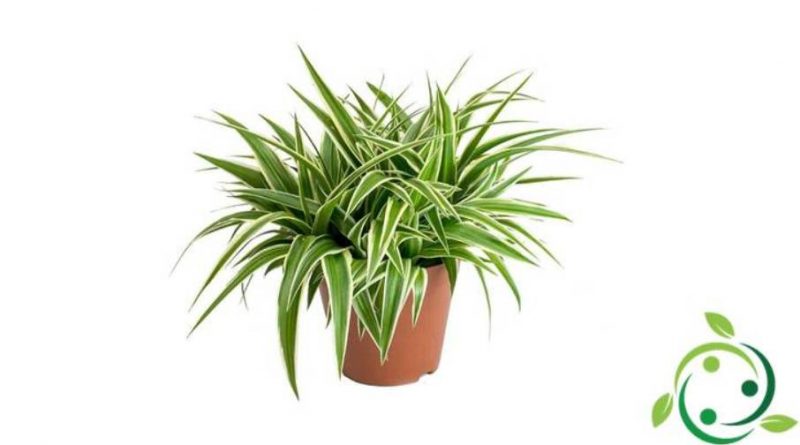How to grow Chlorophytum
How to grow Chlorophytum
Chlorophytum, known as falangio or ribbon (Chlorophytum Ker Gawl., 1807) is a genus of evergreen herbaceous plants of the Agavaceae family and originating in sub-Saharan Africa.
The Chlorophytum is a plant characterized by a dense clump of radical, linear, sharp, green leaves, often variegated with white, which in late spring produces long fleshy stems with a drooping effect on which, after flowering, numerous small rosette plants grow.
Of this species some hybrids are cultivated as ornamental plants and can be recognized by the characteristic white-cream or white-yellowish strip that runs in the center of the arched leaves.
Among the Chlorophytum the most known species are:
– C. comosum with green or variegated leaves with a wavy edge forming a rosette from which whitish stems with small white flowers originate, after the fall of the petals, the growth of new tufts of leaves and their roots begins on the floral scapes of the hanging stems ;
– C. laxum originating from Ghana and Nigeria is small with bright green leaves, delicately edged with white, the flowers gathered in panicles form at the ends of the stems;
– C.undulatum, a native of South Africa, has narrow leaves, hard with rough edges, spike flowers are white with dark red shades.
For the cultivation of ribbons it must be remembered that they are plants that need special climatic requirements. The minimum winter temperature must not be lower than 7 ° C and not exceed 10-12 ° C (unheated rooms are preferable).
The area where these plants are grown must have a good and diffused brightness, but not to the direct rays of the sun. In addition, the plants must be kept in an airy position, but protected from drafts.
As for water supplies, watering must be abundant in the period from spring to summer, so as to keep the soil constantly moist; they should be reduced in autumn-winter, taking care, however, not to let the soil dry. To increase the ambient humidity, foliage sprays are useful during the summer, preferably with deionized water.
The most suitable substrate must consist of a peat-based mixture with added sand, to increase permeability. It is also advisable to place very large gravel or expanded clay at the base of the vessels to increase the draining capacity of the vessels.
Furthermore, to avoid that the tips of the leaves turn yellow, the plants must be repotted every year in the period from March to April; arrived in the months between June and September, liquid fertilizer should be administered once a week.
Chlorophytum are plants subject to radical rottenness because fleshy roots tend to not tolerate water stagnation.
Because of the fleshy roots, they are plants subject to rot; for this reason it will be necessary to pay particular attention to avoiding water stagnation.
Let’s move on to propagation. The Chlorophytum are plants that multiply by dividing the tufts or by rooting the seedlings at the end of the stolons in small pots with suitable soil, taking care to cut the stolon only after rooting. To do this we recommend the spring period.
Among the diseases, parasites and adversity we remember:
– The little red spider: it occurs in hot and dry climates with yellowing and discoloration of the leaves. It prevents elevating environmental humidity and spraying the leaves; it is fought with acaricide products;
– Browning of leaf apices: can be caused by poor watering or nutritional deficiencies, especially if associated with stunted growth. It is necessary to water more frequently or to fertilize the plant;
– The Cocciniglia cotonosa: it can attack plants, especially in the presence of a hot and dry climate. It is necessary to remove them, treat the plant with a natural anticoccidial product, such as Marseille soap, and raise the level of environmental humidity (spraying and foliar washing allow the elimination of scale insects from the larval state). Alternatively you can rub the affected parts with a cotton pad wet with water and alcohol.

